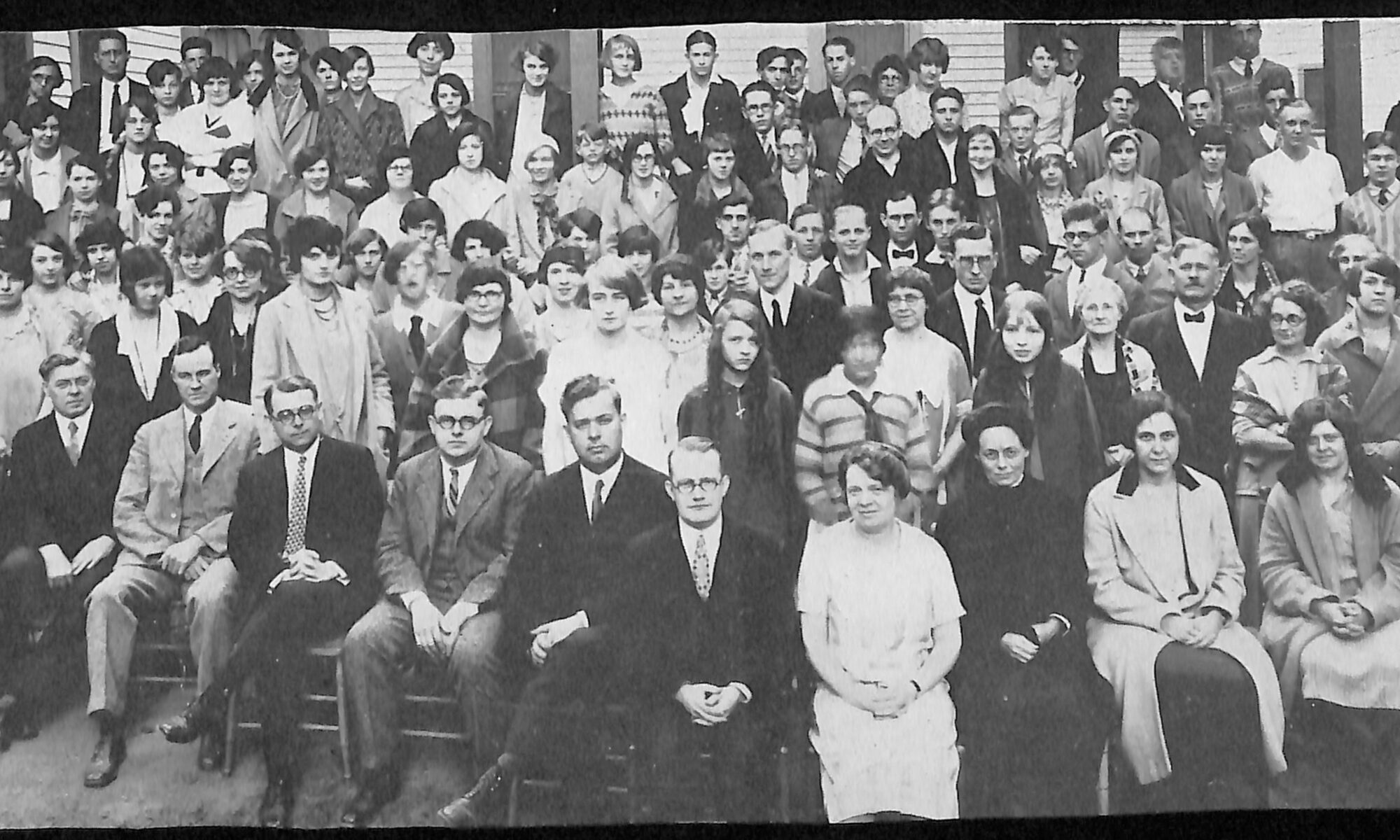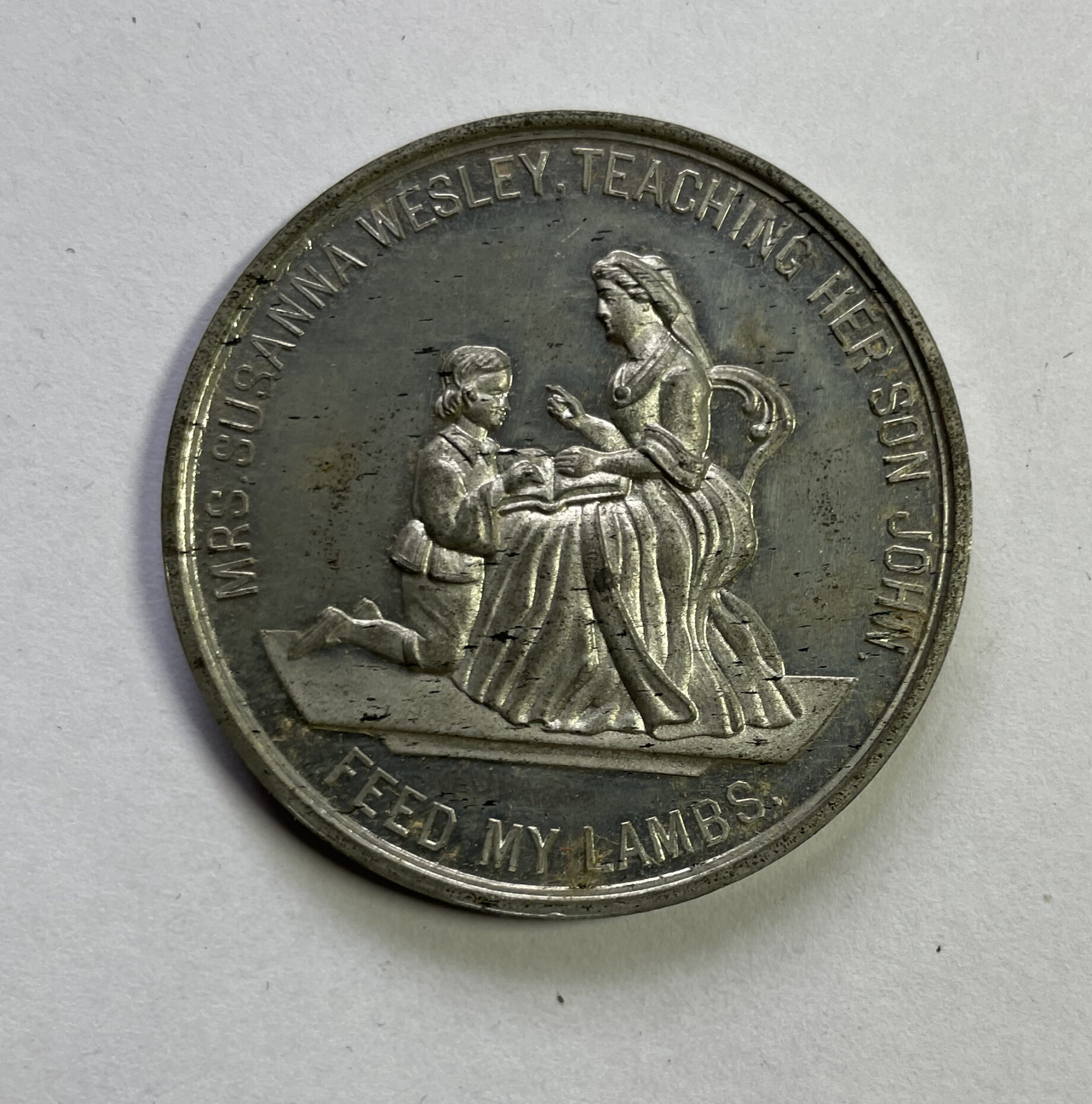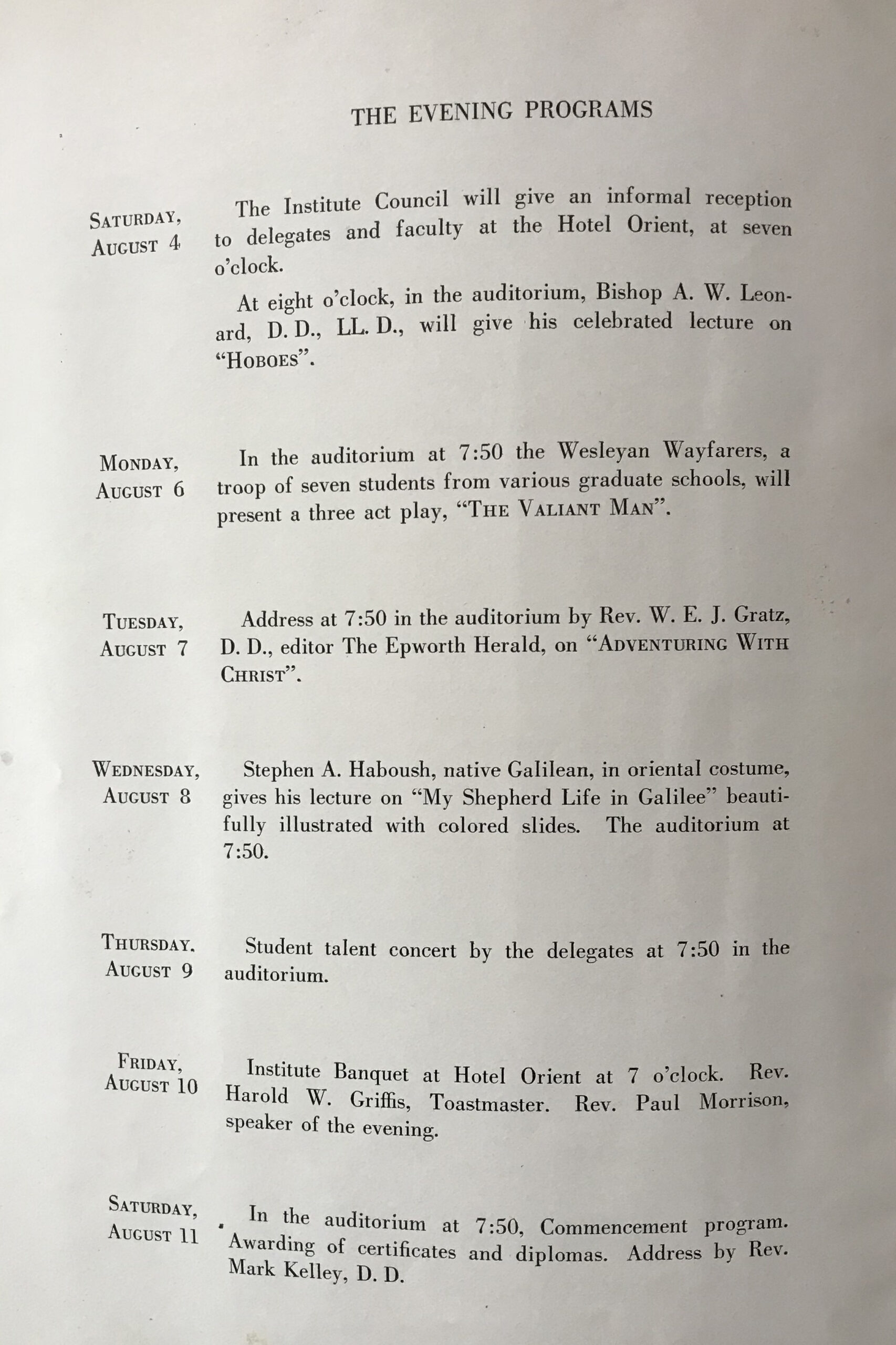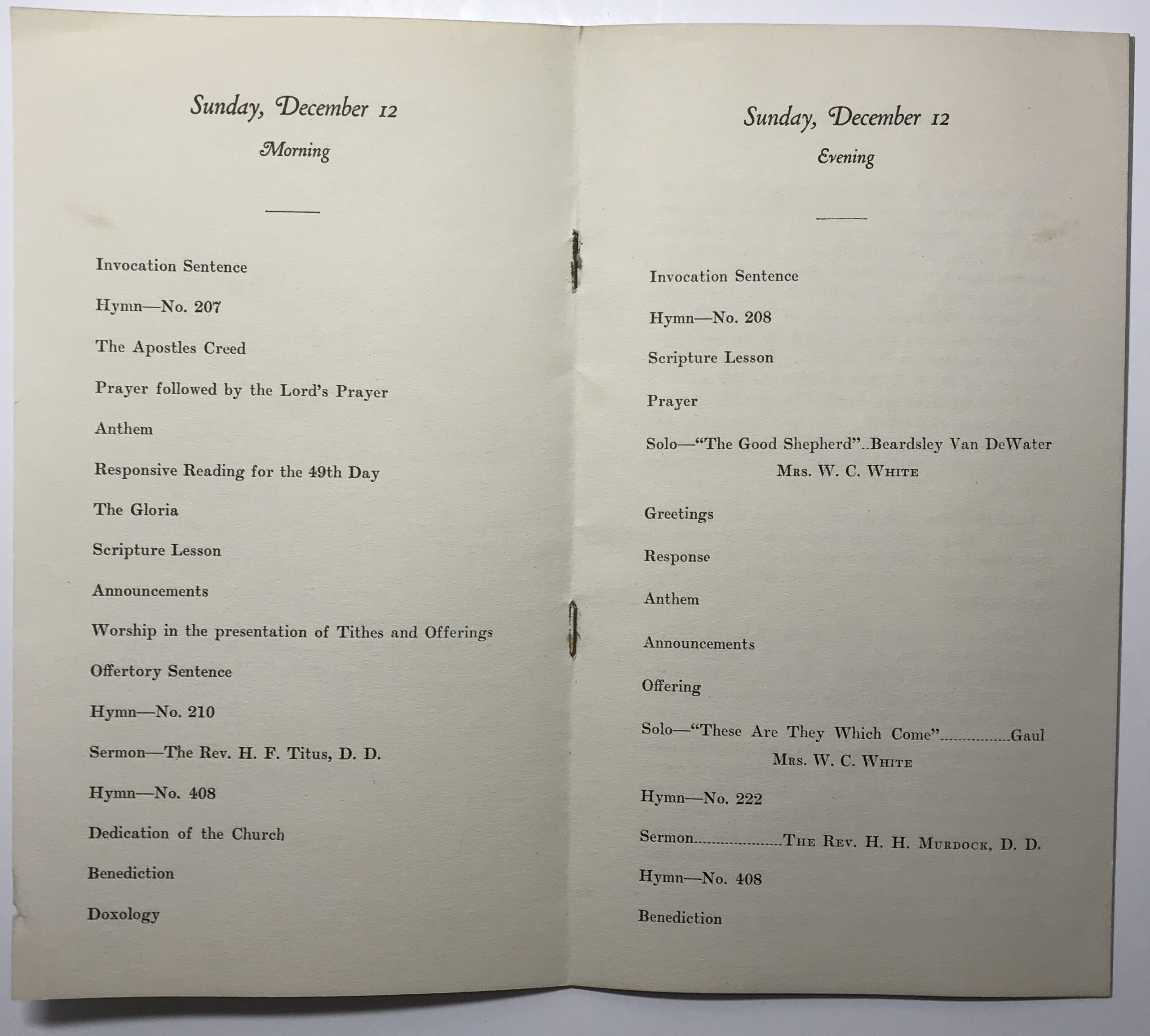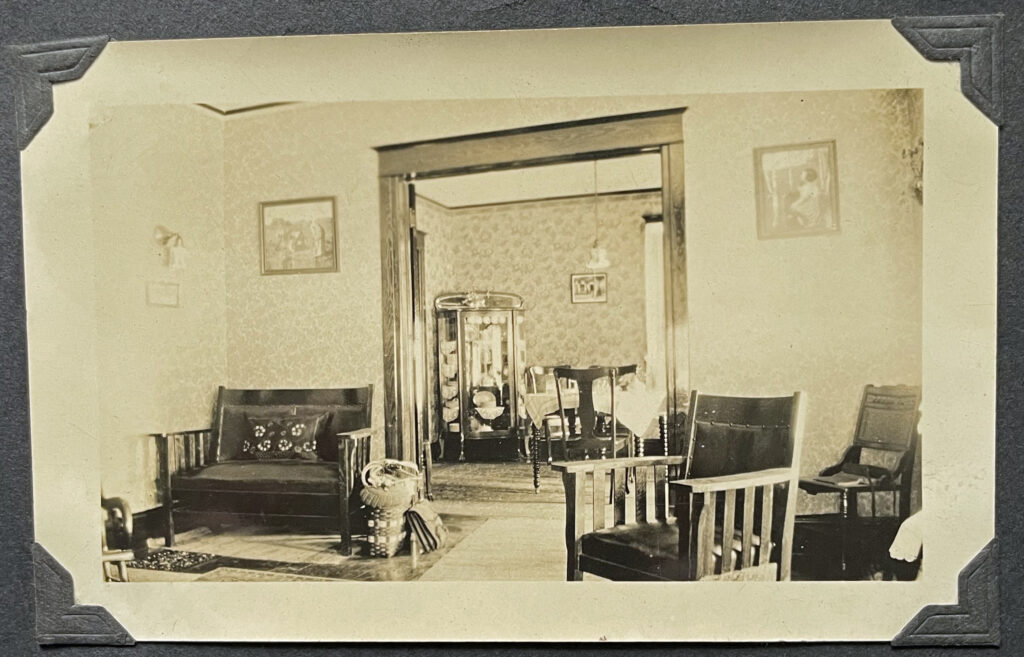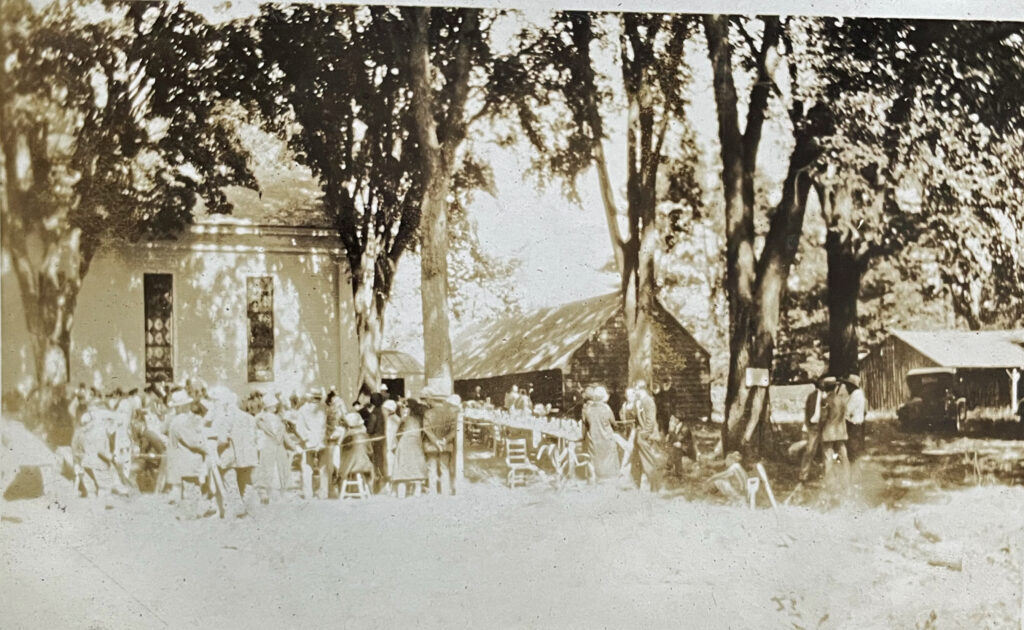“His wit and uncommon sense approach to his messages give him place in the realm of those highly desired as public speakers “
– The Glens Falls Times, March 21, 1950, Page 6

Overview: An Extensive Career within the Methodist Episcopal Church and Local Communities
Harold William Griffis had a deep compassion for his fellow man and in his belief in God, as reflected in his long and varied career as a Methodist minister [1] ; his work with local communities; and in the various positions he assumed in the church organization and in local business and community groups.

Professional proof photographs of Harold William Griffis when he was Superintendent of the Troy District. Click larger view of photo on the left.
For larger views of photos below: left hand photo | right hand photo


The following reflects the major milestones in his career within the Methodist Episcopal church. Part I of this story covers Harold’s pastoral roles with Jonesville and Grooms Churches.
| Year | Position |
| 1925 | Pastor of Jonesville Methodist Episcopal (M.E.) Church and Groom’s M.E. Church, NY |
| 1928 | Pastor at Methodist M.E. Church in Williamstown, MA |
| 1930 | Pastor at Trinity Church, Troy, NY |
| 1938 | Pastor at the First Methodist Church, Amsterdam, NY |
| 1940 | In addition to First Methodist Church, pastor of East Main M.E. Church, Amsterdam |
| 1946 | District Superintendent of Troy District |
| 1948 | Pastor at 5th Avenue & State Street Methodist Church, Troy, NY |
| 1954 | District Superintendent of Albany District |
| 1958 – 1961 | Pastor at Trinity Methodist Church, Albany, NY |
Harold accepted everyone regardless of limitations or faults and his tacit aim was getting the best out of each individual. While he was a spiritual person and looked after the needs of his parishioners, we was down to earth, pragmatic, and business oriented in accomplishing church activities and local business needs. His ability to get along with all walks of life and his organizational skills led to various assignments within the church hierarchy and organization and local business community. In each of his pastoral assignments, Harold Griffis became part of the fabric of everyday activities of his parishioners and in the business and local community.
Harold’s close connections with his parishioners and local business communities were reflected in the scrapbooks he kept of newspaper stories of his parishioners and church activities. He would visit members of the church in weekly hospital visits and at home when there were family crisis or a death in the family. During World War II he personally visited families who lost loved ones in the war and visited soldiers that returned home or were in the hospital.


A review of the leadership he gave outside of the local church is impressive. During his early years, Harold Griffis was active in the Epworth League [2] along with his pastoral duties. He was also District Superintendent for the Troy District as well as for the Albany District. He also assumed duties in various district and national church organizations and Jurisdictional Conferences [3] [4]
During the 36 years of his active ministry with the Methodist Church he was a member of the four major boards of the Troy Methodist Conference: Education, Evangelism, Missions, and World Service, and Finance. During three of the four years on the Board of Missions Harold was the executive secretary. For six years he was on the Conference Secretary’s staff. He was chairman of the Cabinet throughout the four years as Albany District Superintendent. [5]
His ministry reached beyond the Troy Annual Conference. He represented Troy conference at the last sessions of the General Conference, heading the ministerial delegation in 1948, 1956 and 1960. He was a delegate to the Jurisdiction Conference from 1944 though 1960. He served on the Committee on Episcopacy two quadrenniums and on the Committee on Promotion and Cultivation one quadrennium. [5]
The following participation name tags or medals are reflective of Harold’s representation at regional and national Methodist conferences. Harold was a Methodist General Counsel leader from his respective districts various years. For example, he garnered a majority vote on the first round to represent the Troy conference at the 1956 national conference.
“The Rev. Harold Griffis, superintendent of the Albany District, won the designation as leader of the Troy Conference delegation to the General (national) Conference of the Methodist church to be held in 1956 in Minneapolis. He polled 76 votes on the first ballot seven more than were needed to register a majority.” [6]
Harold also was on the board of managers for the Methodist Hospital in Brooklyn, a trustee of Drew University in Madison, New Jersey, and was the former grand chaplain of the Masonic Grand Lodge of New York state. [7]


Harold Griffis was a member of the Freemasons and was typically a Chaplain at their meetings and ceremonies. [8] According to family members, Harold had conflicting views of the rituals associated with the Freemasons but saw the importance of the organization in his role as pastor and as a spiritual leader in the local community.
The following is a photograph of Harold’s American Free Mason’s “Knights of Malta” Cross.

In a eulogy to Harold Griffis, it was stated,
“Many remember his unusual skill in teaching the Bible and personal prayer; but the most thoughtful preparation to which Harold Griffis gave himself was in the field of corporate prayer. This is where so many of his parishioners will remember him at his best” [5]

“A forceful and eloquent speaker with the ability to clothe spiritual truths in the cloak of humor…”
– The Glens Falls Times January 12 1955 Page 14

Harold’s gift of speaking was noted both in and out of the church, as reflected in this newspaper article.
“His wit and uncommon sense approach to his messages give him place in the realm of those highly desired as public speakers “
Early Years
Harold Griffis graduated from Gloversville High School with a commercial diploma and initially worked in the Gloversville YMCA after high school graduation. Having decided to become a minister while he was a junior in high school, he realized the need to obtain a college degree. In his post high school graduate year he was tutored by his high school sweetheart, Evelyn Theresa Dutcher, to take the required college entrance exams to enter college. While Harold was working, Evelyn went on to teacher’s college immediately after they both graduated from high school.
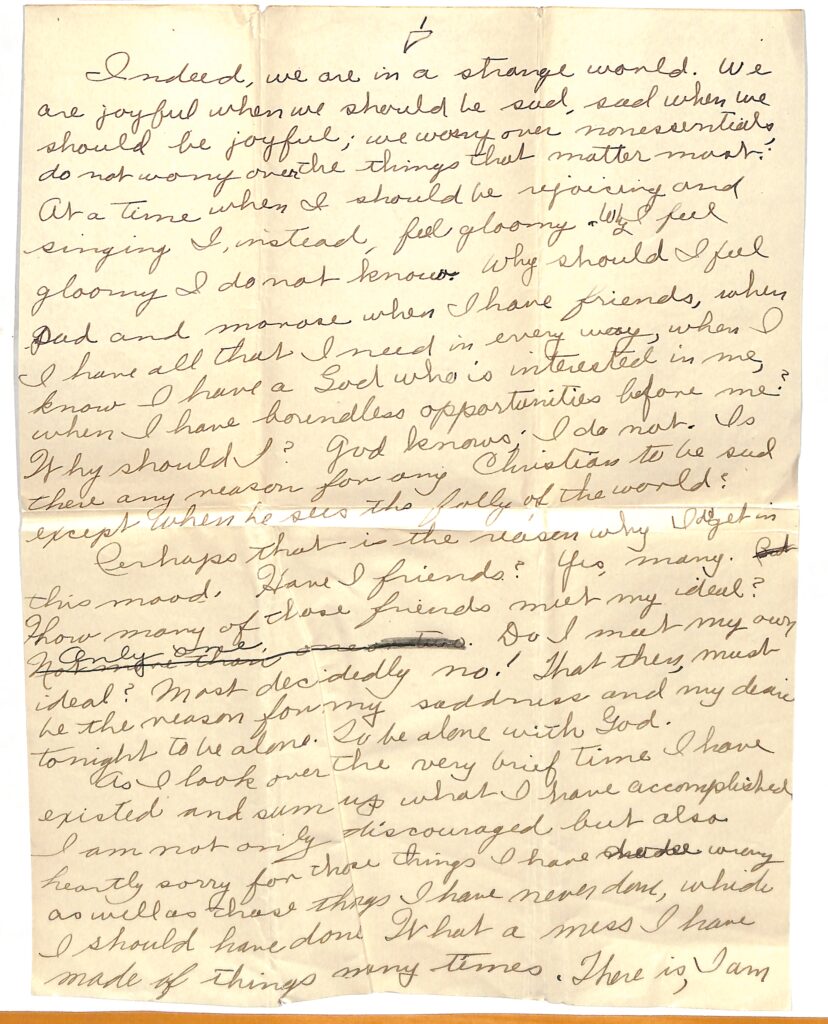
My Creed
At an early age, Harold William Griffis gave his life to God and serving man. When he was a junior in high school, he decided he would enter the ministry.
He wrote a letter of testimony that he kept for himself at the age of 18 on December 10, 1921. It was in an envelope that he kept throughout his life. He reaffirmed his thoughts in the letter on February 15, 1923.
With Evelyn’s help, he passed the college entrance exams. Harold applied and was accepted to Wesleyan University in Middletown, Connecticut.


During his college years, he applied to the Troy Annual Conference of the Methodist Church to be accepted and ordained as a Preacher in 1920. During his sophomore year at Wesleyan University he was admitted as a trial pastor in the Methodist Episcopal Church April 1923 . He became a Deacon in the church in 1925 and an Elder in 1927 [10]

The Glens Falls Times, April 5, 1923, Thursday Evening, “Hudson Falls” Page 3 Click image for larger view.

Harold Griffis admitted as trial pastor.
Excerpt from The Glens Falls Times April 7, 1923, Page 1


Harold graduated from Wesleyan University in 1925 and was appointed as a minister and pastor to the Jonesville and Grooms Methodist Episcopal (M.E.) churches in New York state.


Epworth League
Founded in 1889, the Epworth League is a Methodist young adult association for people aged 18 to 35. At its conception, the purpose of the League was “the promotion of intelligent and vital piety among the young people of the Church: to encourage and cultivate Christ-centered character in young adults around the world through community building, missions, and spiritual growth”. [2]
Harold and Evelyn were involved with the Epworth league as early as 1918. As Harold became more involved in the church, he and Evelyn assumed a variety of roles within the league. Typically they both participated in week long sessions in the summer months. Often these weekly sessions were staged at Riverside or Riparius, New York where eventually they purchased a summer cottage in the 1930’s. Eventually Harold became part of the faculty at local league events and was Dean of the Faculty for the Epworth League Institute in Poultry, Vermont in 1929 while he was Pastor at Groom’s church and Jonesville Church.
Photograph below: Harold Griffis (standing fourth from left) was Dean of the Epworth League Institute in Poultney, Vermont, 1929


The following is a pamphlet that provides a schedule of events and faculty at the Troy Conference Epworth League Institute at Round Lake, NY in the late summer of 1928. Harold Griffis was manager of the week long event as well as part of the faculty. Evelyn Griffis was also part of the faculty.
Below is a group photograph of participants at the Epworth League Institute, 1931. Harold and Evelyn are seated fifth and sixth from the left in the second row. The original photograph is 19.5 inches by 9.75 inches (source: personal scrapbook of Evelyn Griffis. Click for larger view).

1925 – 1928: Church of Jonesville and Grooms Church, New York
Harold and Evelyn were married on Harold’s birthday June 29, 1926. After their wedding, they immediately left for his pastoral duties at the The First Methodist Episcopal Church in Jonesville, New York and the Groom’s M.E. Church. [12] Both churches were relatively close to each other. Groom’s church no longer exists. The map below shows the location of the Jonesville church (marked B) and where Groom’s church was located (marked A) in New York state just west of U.S. Route 87.

The parsonage, where Harold and Evelyn lived as newlyweds, was in Jonesville, New York. Below is a photograph of the Jonesville church and the parsonage in the winter of 1926.


While at Jonesville, Harold was Pastor when the church reached its 100th anniversary.
The following are photographs of the Jonesville Church Parsonage where Harold and Evelyn lived while he was pastor for the Groom’s and Jonesville Churches.

The following photographs reflect social activities associated with pastoral and church roles: a clam bake to raise money for the church. Harold Griffis is standing on the right along with his father in law, Squire Dutcher to his left with the straw hat. Seated in this photograph is John Dutcher, Squire’s brother.
Groom’s Church
The church has roots back to 1788, when Groom’s Methodist Episcopal Church was founded in the Vischer Ferry area, though John Wesley had been sending preachers to Halfmoon, NY and Newton, NY since 1783. The original Newton Methodist Church was founded in 1830, West Crescent in 1835, and Crescent Methodist Church in 1852. In 1957, members of these four Methodist churches of the Clifton Park area voted to merge, combining their membership to reach a total of 361 members. [12]
About two miles from the Mohawk River in the south central part of Clifton Park, the church stood beside an old Indian trail which meandered northward from the ford in the Mohawk at Vischer’s Ferry. Situated on a hilltop, this tract of land (including the larger part of Clifton Park) was granted to five men on 17 September 1703 by Queen Anne.
On 1 Jan 1793, Richard Peters purchased two acres of the tract from James Murray and was one of the founders and organizers of the Old Clifton Park Church. Established in 1788 with many of the residents of Vischer Ferry and Grooms Corner as its members, it stood adjacent to the cemetery until February of 1975 when it was destroyed by fire.


The cemetery, known as the Grooms Methodist Church Cemetery as well as the McIntosh Cemetery is in the 1927 photograph below.









Below is a copy of a letter Harold wrote to the church members on May 27, 1925. He indicates that the trustees of the church were considering repairs on the parsonage and also asked if he wanted a garden plowed and planted. Harold, in good nature, indicated that with their help he would become a farmer.

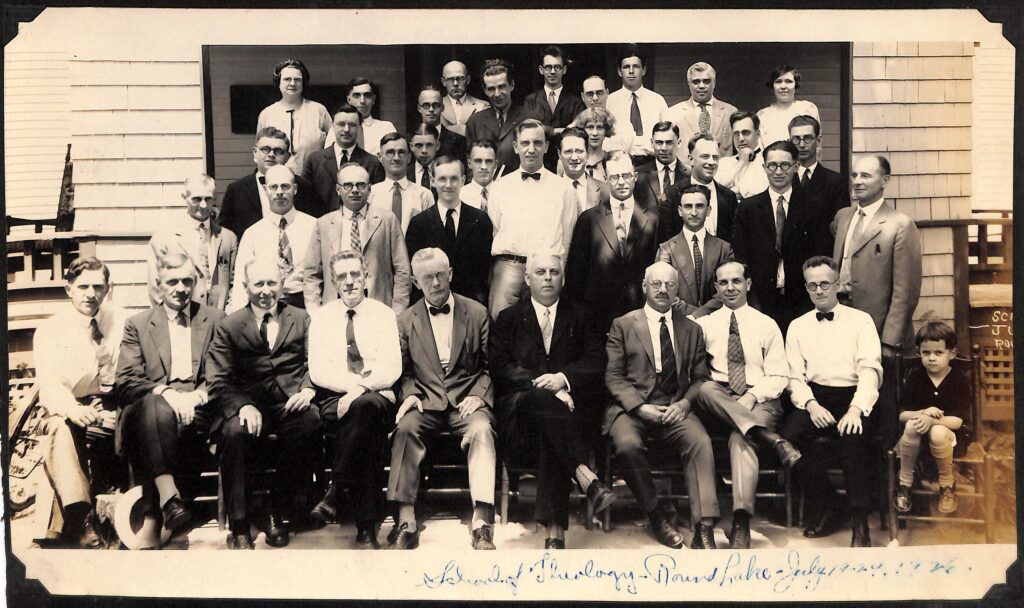
The following photographs, from one of Evelyn Griffis’ scrapbooks, provides memories of a short vacation that Harold and Evelyn had at Caroga Lake in 1927.





The following is a photograph of Harold and Evelyn with some of their contemporaries. All are in their late 20’s, starting careers and new families.

Sources
Featured Image at top of story: Click for enlarged full view of photograph. Round Lake Epworth League Institute August 14-22-1926, Harold Griffis is sitting in the front row, fifth person from the left; and Evelyn Dutcher Griffis is standing in the second row, fourth person from the left.
This story is partly based on material from a book originally published on the life of Harold Griffis as a Methodist minister, see James F. Griffis (Ed.), Sermons, Notes and Letters of Harold William Griffis, Self published, Blurb: Oct, 2018
[1] The Methodist Episcopal Church (MEC) was the oldest and largest Methodist denomination in the United States from its founding in 1784 until 1939. It was also the first religious denomination in the US to organize itself on a national basis. In 1939, the MEC reunited with two breakaway Methodist denominations (the Methodist Protestant Church and the Methodist Episcopal Church, South) to form the Methodist Church.
See A timeline of the United Methodist church to gain an understanding on how various factions united and changed the composition of the church since the 1700’s.
[2] Founded in 1889, the Epworth League is a Methodist young adult association for people aged 18 to 35. It had its beginning at Cleveland’s Central Methodist Church on May 15, 1889. Before that year, as many as five young people’s organizations existed in the Methodist Episcopal church, among them the Methodist Alliance, claiming 20,000 members in 1883; the Oxford League, organized at the Methodist Centennial Conference, with a large chapter at Central Methodist Church; and the Young People’s Christian League. The league, which soon spread worldwide, divided its social service into 6 departments: Spiritual Life, Social Work, Literary Work, Correspondence, Mercy and Help, and Finance. Local chapters organized Fresh Air Work (day camps for city children), literary events, lecture series, and fellowship gatherings.
- See: Epwoth League, Wikipedia, Page updated 30 March 2021, page accessed 26 April, 2021; Encyclopedia of Cleveland History,
- Epworth League, Case Western Reserve University, Page accessed 20 Apr, 2021;
- A Little About Us, Epworth League, Page accessed 20 Apr 2021.
[3] Jurisdictional Conferences are a collection of Annual Conferences of The United Methodist Church located inside the United States. The constitution of The United Methodist Church established five jurisdictions within the United States and it specifies which states will be a part of each. Each jurisdiction is responsible for boundaries of annual conferences within those states and electing its own bishops.
See: Jurisdictional conferences (United Methodist Church), Wikipedia, Page updated 26 Jan 2021, page accessed 28 Apr 2021.
[4] See, for example, a newspaper article indicating his role as Assistant Secretary to an annual Troy Conference early in his career, The Glens Falls Times April 12, 1928 Page 11
[5] Brochure: Trinity Methodist Church Memorial Service for Harold William Griffis November 26, 1961:




[6] The Glens Falls Times May 6 1955 Page 2.

[7] Harold’s various roles in organizations were mentioned in an obituary in The Glens Falls Times, July 01, 1961, Page 5:

[8] F and AM stands for Free and Accepted Masons. For more information on F. & A.M. see AF and AM vs F and AM States, Page accessed 28 Apr 2021.
[9] The Knights Templar, full name The United Religious, Military and Masonic Orders of the Temple and of St John of Jerusalem, Palestine, Rhodes and Malta, is a fraternal order affiliated with Freemasonry. Unlike the initial degrees conferred in a regular Masonic Lodge, which (in most Regular Masonic jurisdictions) only require a belief in a Supreme Being regardless of religious affiliation, the Knights Templar is one of several additional Masonic Orders in which membership is open only to Freemasons who profess a belief in Christianity.
[10] Dates of appointments from the Directory and Pastoral Record , Troy Conference 1957.
See also newspaper article on his appointment as elder, The Lake Placid news., April 22, 1927, Page 3
The following provides an explanation of the difference between Deacons, Elders and Pastors in the Methodist church.
Elders are ordained to a “ministry of word, sacrament, order and service”. They preach and teach God’s word, provide pastoral care, administer sacraments of baptism and communion, and order the life of the church. Deacons are ordained to a “ministry of word, service, compassion and justice”. Like elders they preach and teach and provide pastoral care, but they do not administer sacraments. They are called to a ministry that brings the church into the world — and the world into the church. Susan Keaton, Deacons: Bridging the church and the world, 3 Oct 2016, Page accessed 1 May 2021.
An elder, in many Methodist Churches, is ordained minister that has the responsibilities to preach and teach, preside at the celebration of the sacraments, administer the Church through pastoral guidance, and lead the congregations under their care. The Book of Discipline of the United Methodist Church states that:
Elders are ministers who have completed their formal preparation for the ministry of Word, Sacrament, and Order; have been elected itinerant members in full connection with an Annual Conference; and have been ordained elders in accordance with the Order and Discipline of The United Methodist Church.
The Order of Elder and the Order of Deacon differ in function. To borrow from medical terminology, Elders are generalists, while Deacons are specialists. See Order of Deacon and Order of Elder Similarities, Page accessed 1 May 2021.
A pastor is the ordained or licensed person who has been appointed by the bishop to be in charge of a local church or churches. The pastor in this formal sense is the official representative of the Annual Conference and is responsible for serving effectively in the ministry of “Word, Sacrament, and Order” in that appointment. In a less formal sense, pastor is a title synonymous with minister.
[12] History of Jonesville Church, Jonesville United Methodist Church, Page accessed 23 Apr 2021;
See also: Shenendehowa United Methodist Church, Wikipedia, Page accessed 15 May 2021


